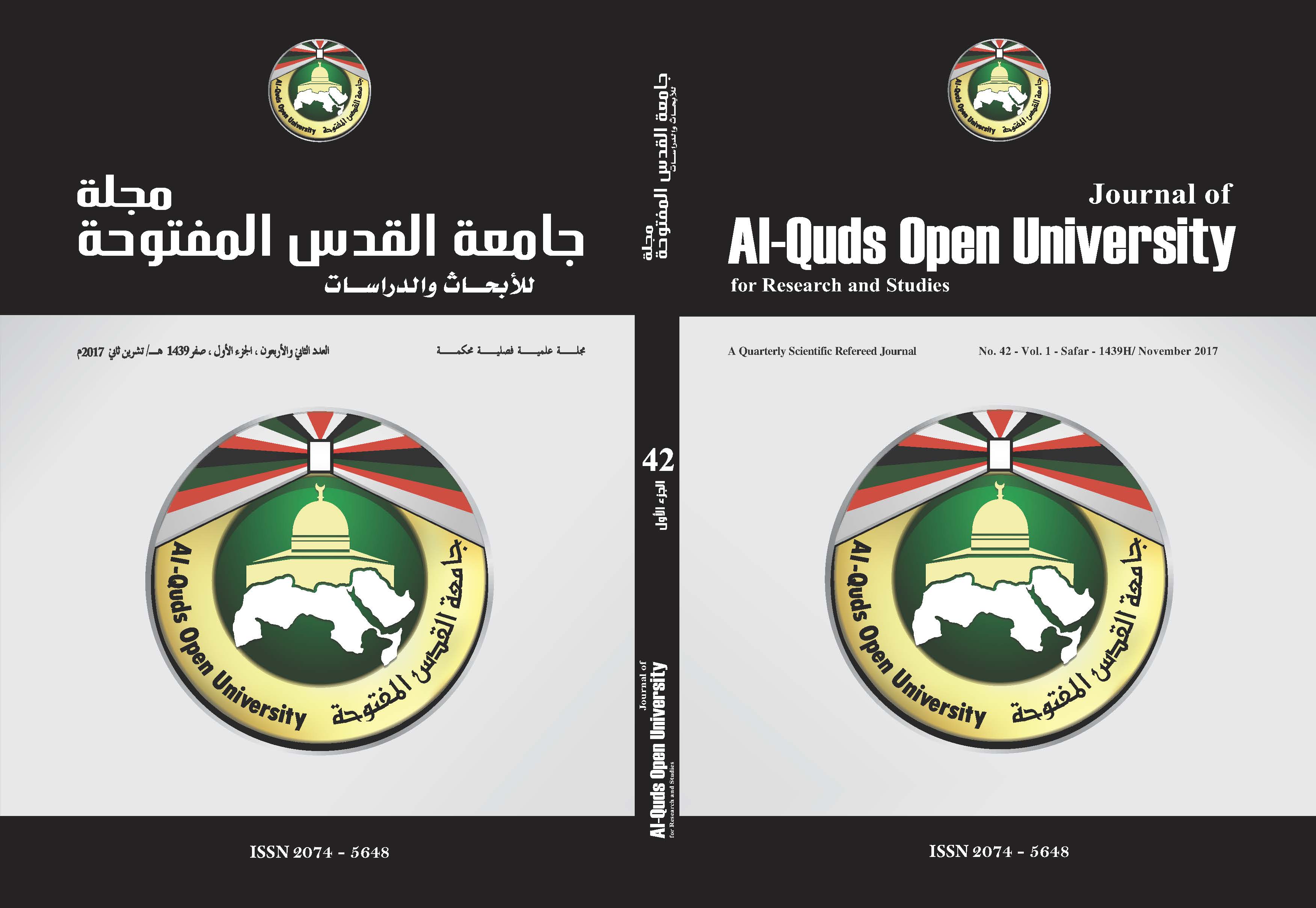The Impact of Employing Animation and field trips in the Teaching of Wastewater Treatment System in Systems Unit on the Achievement Level of Tenth Grade Students
Keywords:
Animations, Educational journey, Wastewater treatment system, Technology book.Abstract
This study aimed at identifying the impact of employing animation and field trips in the teaching of technology on the level achievement of tenth grade students. The researcher used constructional and the experimental methods to measure the differences in achievement of the study sample, which consisted of (130 students), distributed as follows: (45 students) as controller group which taught by the traditional approach, (39 students) as a computerized group, and the second experimental group consisted of (46 students) and taught by the educational journey method to European hospital station for water desalination. The researcher developed a pre-test and post-test to measure the level of achievement for students. The results are as follows:
- There are statistically significant differences at the level of (α ≤ 0.05) between the average achievements of students in the control group studied (by traditional method) and the experimental group (which studied by animation drawing program in favor of the experimental group).
- There are also statistically significant differences at the level of (α ≤ 0.05) between the average achievement of students in the control group studied by (the traditional method) and the experimental group (which studied by educational journey), in favor of the experimental group.
- However, there was no statistically significant differences at the level of (α ≤ 0.05) between the average achievement of students in the experimental group (which studied by the animation program) and the experimental group (which studied by the educational journey).
The study recommended using both methods the method of animation as well as educational journey in teaching technology because of its impact and effectiveness in teaching as well as its motivation to students towards learning.
Downloads
Published
How to Cite
Issue
Section
License
- The editorial board confirms its commitment to the intellectual property rights
- Researchers also have to commit to the intellectual property rights.
- The research copyrights and publication are owned by the Journal once the researcher is notified about the approval of the paper. The scientific materials published or approved for publishing in the Journal should not be republished unless a written acknowledgment is obtained by the Deanship of Scientific Research.
- Research papers should not be published or republished unless a written acknowledgement is obtained from the Deanship of Scientific Research.
- The researcher has the right to accredit the research to himself, and to place his name on all the copies, editions and volumes published.
- The author has the right to request the accreditation of the published papers to himself.













_2.png)
_.png)
_2.png)
_1.png)
_.png)

